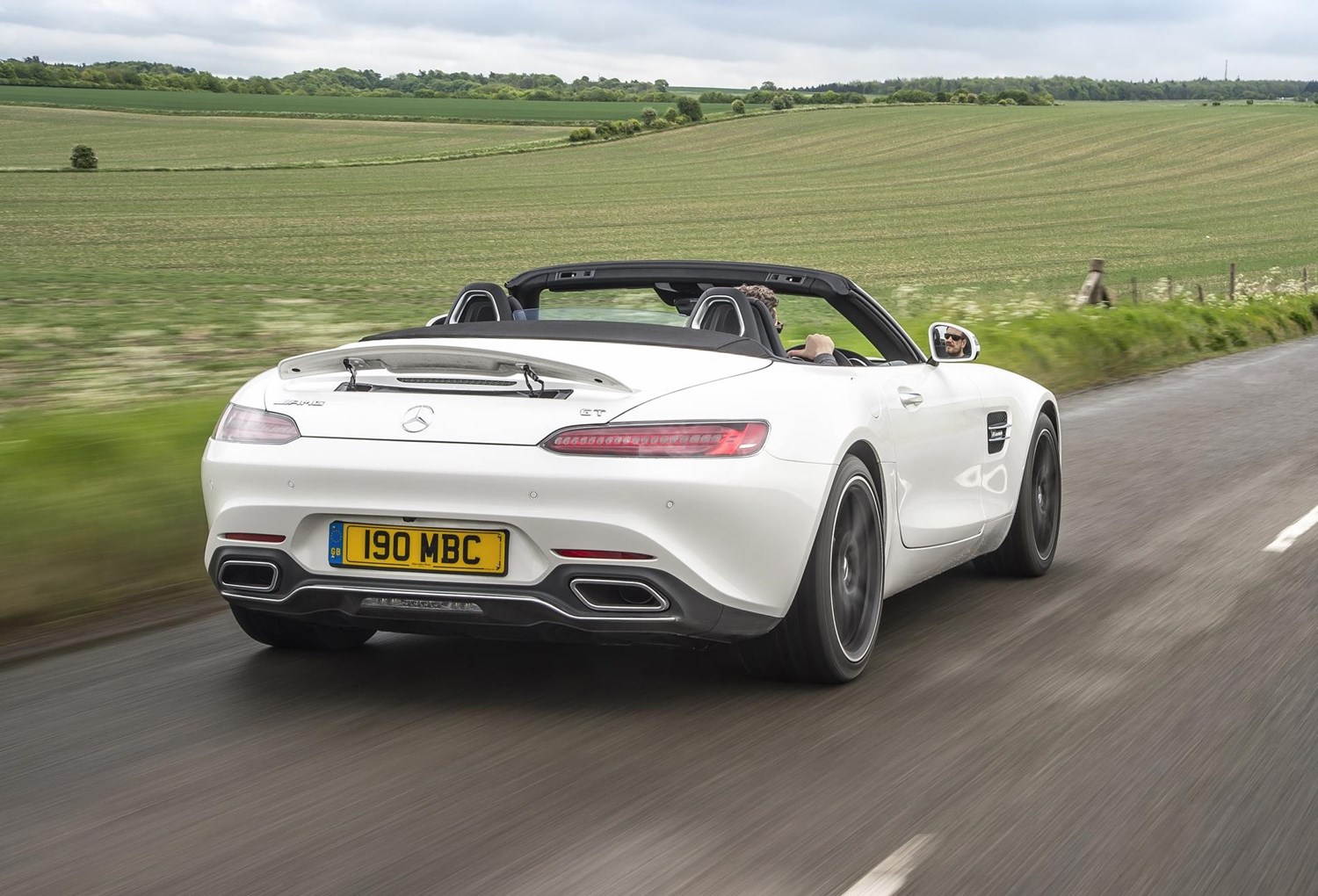Latest model
As three new AMG GT variants have been launched in 2017, we will mention each one individually.
First up – the AMG GT R. This heavily tuned version of the AMG GT S is one of Mercedes’ fastest cars ever, and was heavily developed for track use, where it excels. Despite it only having 74bhp more than the AMG GT S, it feels miles quicker, although its hardcore drive makes it a bit of a handful to drive on UK roads.
Next is the Mercedes AMG GT Roadster, the stunning convertible version of the AMG GT. The Roadster version is available as a GT, GT S and GT C.
The GT C Edition 50 is the car to mark AMG’s 50th anniversary of producing fast and often bizarre performance concoctions. The Edition 50 is a limited-edition version of the GT C.
Value for money
Anything that is as expensive as the AMG GT is never going to be seen as great value for money.
Its entry price is quite hefty – starting at £99,960 for the coupe and £111,360 for the Roadster. It is more expensive than the Porsche 911, one of its closest rivals, which has the advantage of being a 2+2.
While the standard model is largely well-equipped, featuring 19-inch AMG alloy wheels, AMG sports seats, Nappa leather upholstery and an AMG performance exhaust, it does miss out on certain features that really should come as standard on a £100,000 car. For example, you don’t get a reversing camera below the GT C trim.
The standard AMG GT has changed very little in its two years of production, meaning that 2015 examples can be picked up for less than £80,000 – a sizeable chunk off the original list price. More powerful GT S examples are also not that different in price on the used market. We saw a 2015 AMG GT S for sale at £79,950, and while it had done 23,000 miles, slightly more than normal, it seemed like a great buy.
Looks and image
This is a category where the AMG GT really comes into its own.
The AMG GT is arguably the best-looking Mercedes currently on sale, with its swopping great bonnet and muscular rear wheel arches. It really does stand out on the road, and for the right reasons. Mercedes have a strong brand image, and with the AMG GT being at the top of the ladder in the Mercedes-AMG range, it is one of the most desirable cars you can buy at this price point.
All models are fitted with AMG’s fabulous 4.0-litre V8 engine, that comes in various tunes. Not only does it sound incredible, but it offers some superb performance.
Yet, despite all the power and drama, it settles down surprisingly well when you want it to. While it doesn’t offer the comfort of a luxury car, for a sports car with this much power it is surprisingly comfortable and is only let down by intruding wind noise from the wide tyres.





